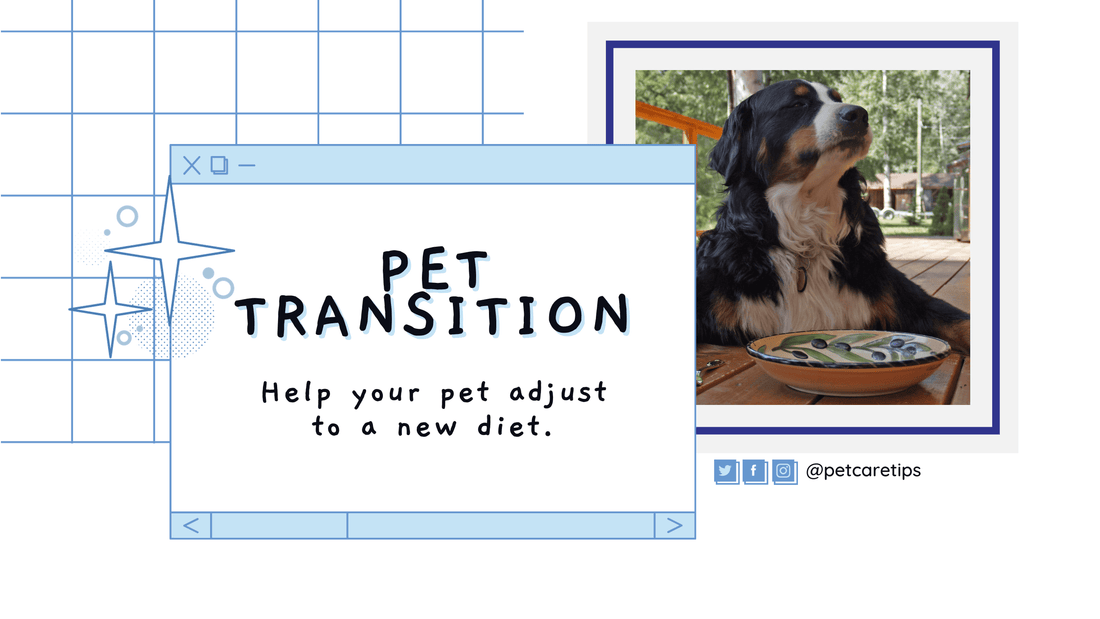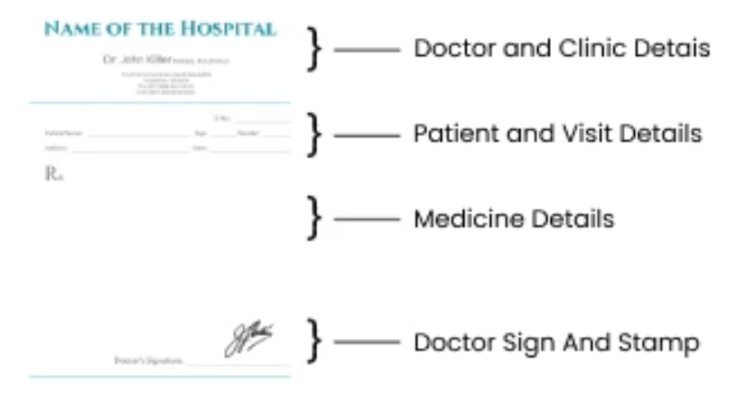Transition your Pet to a New Food can be a delicate process that requires careful planning and consideration. Whether you are switching your pet's diet due to health reasons or simply wanting to introduce a new brand, it is important to do so gradually to avoid any digestive upset or refusal to eat. In this step-by-step guide, we will walk you through the process of successfully transitioning your pet to a new food, ensuring their health and happiness throughout the transition. By following these guidelines, you can make the switch as smooth as possible for your furry friend.
Assessing the Need for a Food Transition
When considering a food transition for your pet, it is important to assess whether such a change is necessary. This section will guide you through the process of evaluating the need for a food transition.
Observe your pet's current food intake and behavior
Start by closely observing your pet's current food intake and behavior. Take note of any changes in appetite, digestion, or overall health. If your pet is experiencing frequent digestive issues, such as vomiting or diarrhea, it may be an indication that a food transition is needed.
Consult with your veterinarian
It is always advisable to consult with your veterinarian before making any significant changes to your pet's diet. They can provide valuable insights and guidance based on your pet's specific needs and health conditions. Your veterinarian may recommend a food transition if they believe it will benefit your pet's overall well-being.
Consider your pet's age and life stage
Different life stages require different nutritional needs. Puppies and kittens, for example, have different dietary requirements compared to adult or senior pets. If your pet is transitioning from one life stage to another, it may be necessary to switch to a food that is specifically formulated for their age group.
Evaluate the quality of your pet's current food
Assess the quality of the food you are currently feeding your pet. Look for key indicators such as the presence of fillers, artificial additives, or low-quality ingredients. If you find that your pet's current food lacks essential nutrients or contains ingredients that may be harmful, it may be time to consider a transition to a higher-quality food.
Identify specific dietary needs or health concerns
If your pet has specific dietary needs or health concerns, a food transition may be necessary to address these issues. For example, if your pet has food allergies or sensitivities, switching to a hypoallergenic or limited ingredient diet may be beneficial. Similarly, if your pet has been diagnosed with a medical condition that requires a
specialized diet, transitioning to a therapeutic food may be recommended.
Evaluate the availability and cost of the new food
Consider the availability and cost of the new food you are considering for your pet. Ensure that the new food is readily accessible and fits within your budget. It is important to choose a food that you can consistently provide to your pet without causing financial strain. By carefully assessing the need for a food transition based on these factors, you can make an informed decision that will contribute to your pet's overall health and well-being.
Choosing the Right New Food
When transitioning your pet to a new food, it is crucial to choose the right one that meets their nutritional needs and preferences. Here are some factors to consider when selecting the new food:
Consult with your veterinarian
Before making any changes to your pet's diet, it is essential to consult with your veterinarian. They can provide valuable insights and recommendations based on your pet's specific needs, such as age, breed, size, and any existing health conditions. Your vet can also help identify any dietary restrictions or allergies your pet may have, ensuring you choose a suitable food.
Consider your pet's age and life stage
Different life stages require different nutritional needs. Puppies and kittens, for example, need food that supports their growth and development, while adult and senior pets may require formulas tailored to their age-related needs. Ensure the new food you choose is appropriate for your pet's life stage to provide them with the necessary nutrients.
Evaluate the ingredients
Take a close look at the ingredients list of the new food. Look for high-quality protein sources, such as meat or fish, listed as the first ingredient. Avoid foods that contain excessive fillers, artificial additives, or by-products. Opt for options that include essential nutrients like vitamins, minerals, and omega-3 fatty acids, which contribute to your pet's overall health.
Consider your pet's dietary preferences
Observe your pet's preferences when it comes to flavors and textures. Some pets may have specific tastes or dietary restrictions, so it's important to choose a food that they will enjoy. If your pet has any allergies or sensitivities, select a food that is free from common allergens, such as grains or certain proteins.
Research reputable brands
Do your research and choose a reputable pet food brand. Look for companies that have a history of producing high-quality, nutritionally balanced foods. Check for certifications or affiliations with veterinary nutritionists or organizations that ensure the brand follows strict manufacturing standards. Reading reviews and seeking recommendations from other pet owners can also help you make an informed decision.
Gradual transition
When introducing the new food, it is crucial to do so gradually. Start by mixing a small amount of the new food with your pet's current food, gradually increasing the proportion over several days or weeks. This gradual transition helps prevent digestive upset and allows your pet to adjust to the new food more easily. By considering these factors and taking the time to choose the right new food for your pet, you can ensure a successful transition and support their overall health and well-being.
Preparing for the Transition
Before transitioning your pet to a new food, it is important to take certain steps to ensure a successful transition. By following these guidelines, you can help minimize any potential digestive upset and make the transition as smooth as possible for your pet.
Consult with your veterinarian
Before making any changes to your pet's diet, it is always a good idea to consult with your veterinarian. They can provide valuable insight and guidance based on your pet's specific needs and health conditions. Your vet can also recommend the most suitable type of food for your pet's age, breed, and any dietary restrictions they may have.
Choose the right new food
When selecting a new food for your pet, consider factors such as their age, size, breed, and any specific dietary requirements. Look for high-quality
premium pet foods that meet the nutritional needs of your pet. It is also important to choose a food that is similar in terms of ingredients and nutrient composition to their current food. This will help ease the transition and minimize digestive issues.
Gradual transition
A gradual transition is key to successfully switching your pet's food. Start by mixing a small amount of the new food with their current food. Over the course of several days, gradually increase the proportion of the new food while decreasing the amount of the old food. This slow transition allows your pet's digestive system to adjust to the new food gradually, reducing the chances of gastrointestinal upset.
Monitor your pet's response
During the transition period, closely monitor your pet's response to the new food. Keep an eye out for any signs of digestive upset, such as diarrhea, vomiting, or loss of appetite. If you notice any concerning symptoms, consult with your veterinarian for further guidance. It may be necessary to adjust the transition plan or consider alternative food options.
Maintain a consistent feeding schedule
To help your pet adjust to the new food, it is important to maintain a consistent feeding schedule. Stick to regular meal times and avoid free-feeding or excessive treats during the transition period. This will help your pet establish a routine and adapt to the new food more easily.
Stay patient and persistent
Transitioning your pet to a new food can take time, and every pet is different. It is important to be patient and persistent throughout the process. Some pets may adapt quickly, while others may require a longer transition period. By staying consistent and providing positive reinforcement, you can help your pet adjust to their new food successfully. By following these steps and taking the time to prepare for the transition, you can help ensure a smooth and successful switch to a new food for your beloved pet. Remember to consult with your veterinarian for personalized advice and guidance throughout the process. [caption id="attachment_5524" align="aligncenter" width="619"]

Transition your Pet to a New Food[/caption]
Gradual Transition Process
Transitioning your pet to a new food should be done gradually to minimize digestive upset and ensure a successful switch. Follow these steps to smoothly transition your pet to a new food:
Step 1: Consult with your veterinarian
Before starting the transition process, it is important to consult with your veterinarian. They can provide guidance on the appropriate type of food for your pet's specific needs and any dietary restrictions they may have.
Step 2: Choose the new food
Select a high-quality pet food that is suitable for your pet's age, breed, and health condition. Consider factors such as the ingredients, nutritional content, and any specific dietary requirements your pet may have.
Step 3: Start with a small amount
Begin by mixing a small amount of the new food with your pet's current food. This initial mixture should consist of approximately 75% old food and 25% new food. Gradually increase the proportion of new food over time.
Step 4: Monitor your pet's response
Observe your pet's reaction to the new food during the transition process. Look for any signs of digestive upset, such as diarrhea, vomiting, or loss of appetite. If any adverse reactions occur, consult with your veterinarian for further guidance.
Step 5: Slowly increase the new food
Over the course of several days or weeks, gradually increase the proportion of new food while decreasing the amount of old food. Aim to reach a 50/50 ratio of old and new food at the midpoint of the transition process.
Step 6: Complete the transition
Once your pet is comfortably consuming a 50/50 mixture of old and new food without any adverse reactions, you can further increase the proportion of new food. Continue this gradual transition until your pet is solely eating the new food.
Step 7: Monitor long-term effects
After completing the transition, continue to monitor your pet's response to the new food. Look for improvements in their overall health, coat condition, energy levels, and digestion. If any concerns arise, consult with your veterinarian for further evaluation. By following this gradual transition process, you can help your pet adjust to their new food successfully and minimize any potential digestive issues. Remember to consult with your veterinarian throughout the process to ensure the best outcome for your furry friend.
Monitoring and Adjusting the Transition
During the transition period, it is crucial to closely monitor your pet's response to the new food and make any necessary adjustments to ensure a successful transition. Here are the key steps to follow:
Observe Your Pet's Behavior and Appetite
Pay close attention to your pet's behavior and appetite throughout the transition process. Monitor any changes in their eating habits, such as increased or decreased appetite, reluctance to eat, or any signs of gastrointestinal distress. Keep an eye on their energy levels, coat condition, and overall well-being as well.
Assess Digestive Health
Check your pet's stool regularly to evaluate their digestive health. Look for any changes in consistency, color, or frequency. Loose stools or diarrhea may indicate that the transition is happening too quickly or that the new food is not suitable for your pet. On the other hand, if your pet experiences constipation or has difficulty passing stool, it may be a sign that the transition is too slow.
Gradually Increase the New Food
If your pet is tolerating the new food well, gradually increase the proportion of the new food in their meals. This can be done by slightly reducing the amount of the old food and replacing it with the new food over several days or weeks, depending on your pet's tolerance. Monitor their response to each adjustment and make note of any changes.
Adjust the Transition Timeline
If you notice any adverse reactions or digestive issues, it may be necessary to slow down the transition process. This could involve extending the time spent on each stage of the transition or even reverting back to the previous food temporarily. Remember, every pet is unique, and some may require a longer transition period than others.
Consult with Your Veterinarian
If you encounter any significant challenges or concerns during the transition, it is always advisable to consult with your veterinarian. They can provide guidance tailored to your pet's specific needs and help you make any necessary adjustments to ensure a smooth transition. By closely monitoring your pet's behavior, appetite, digestive health, and making appropriate adjustments, you can successfully transition your pet to a new food while minimizing any potential discomfort or digestive issues.
Completing the Transition
Once you have successfully followed the steps outlined in the previous section, your pet should be well on their way to transitioning to their new food. However, it is important to complete the transition process properly to ensure a smooth and successful switch. This section will guide you through the final steps of completing the transition. [caption id="attachment_5525" align="aligncenter" width="614"]

completing Transition your Pet to a New Food[/caption]
Step 1: Monitor your pet's response
During the final stage of the transition, it is crucial to closely monitor your pet's response to the new food. Keep a close eye on their behavior, appetite, and overall well-being. Look for any signs of digestive upset, such as vomiting, diarrhea, or excessive gas. If you notice any concerning symptoms, consult your veterinarian for guidance.
Step 2: Gradually increase the new food portion
At this stage, you should be feeding your pet a mixture of both the old and new food. Gradually increase the proportion of the new food while decreasing the amount of the old food over the course of several days. This slow transition will allow your pet's digestive system to adjust to the new food without causing any sudden changes that could lead to digestive upset.
Step 3: Observe stool consistency
As you continue to increase the proportion of the new food, pay close attention to your pet's stool consistency. Ideally, their stool should be firm and well-formed. If you notice loose stools or diarrhea, it may indicate that the transition is happening too quickly for your pet's digestive system. In such cases, consider slowing down the transition process by maintaining the current ratio of old and new food for a few more days before making further adjustments.
Step 4: Complete the transition
Once your pet is comfortably eating the new food without any digestive issues, you can complete the transition by fully replacing the old food with the new one. Ensure that you have gradually increased the proportion of the new food over a period of 7-10 days, allowing your pet's digestive system to adapt to the change. Remember to dispose of any remaining old food to prevent accidental consumption.
Step 5: Maintain consistency
After completing the transition, it is important to maintain consistency in your pet's diet. Stick to the new food and avoid sudden changes or frequent switching between different brands or flavors. Abrupt changes can disrupt your pet's digestive system and lead to gastrointestinal issues. If you need to make any future dietary changes, follow a similar transition process to ensure a smooth switch. By following these steps and closely monitoring your pet's response, you can successfully complete the transition to a new food. Remember to consult your veterinarian if you have any concerns or questions throughout the process.
Conclusion
Transitioning your pet to a new food can be a gradual and delicate process. By following the step-by-step guide outlined in this article, you can ensure a successful transition that promotes your pet's health and well-being. First, it is important to assess the need for a food transition. Consider factors such as your pet's age, health condition, and any specific dietary requirements they may have. This will help you determine if a change in food is necessary. Next, choose the right new food for your pet. Consult with your veterinarian to select a high-quality, nutritionally balanced option that meets your pet's specific needs. Before starting the transition, take the time to prepare. Gradually introduce the new food by mixing it with the old food, gradually increasing the proportion of the new food over time. This will help your pet adjust to the new taste and texture. Throughout the transition process, closely monitor your pet's response to the new food. Look for any signs of digestive upset or allergies, and make adjustments as needed. Your pet's well-being should always be the top priority. Finally, once your pet has successfully adjusted to the new food, you can complete the transition. Ensure that the new food is now the sole source of nutrition for your pet. Remember, patience and consistency are key when transitioning your pet to a new food. By following these steps and providing the necessary care and attention, you can help your pet make a smooth and successful transition to their new diet.
 Transition your Pet to a New Food[/caption]
Transition your Pet to a New Food[/caption]
 completing Transition your Pet to a New Food[/caption]
completing Transition your Pet to a New Food[/caption]






